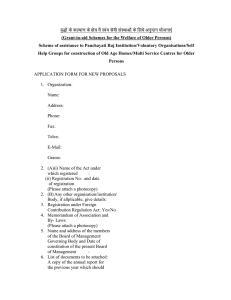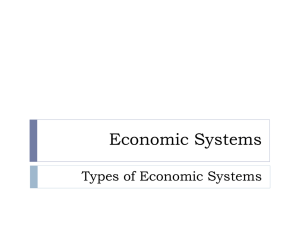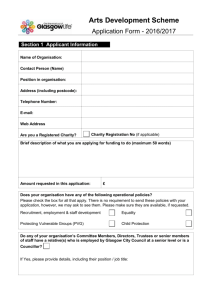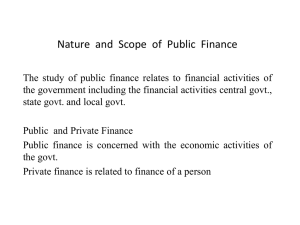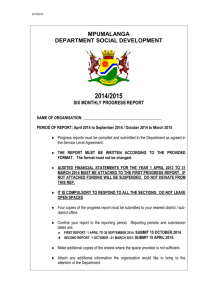xi statistics notes
advertisement
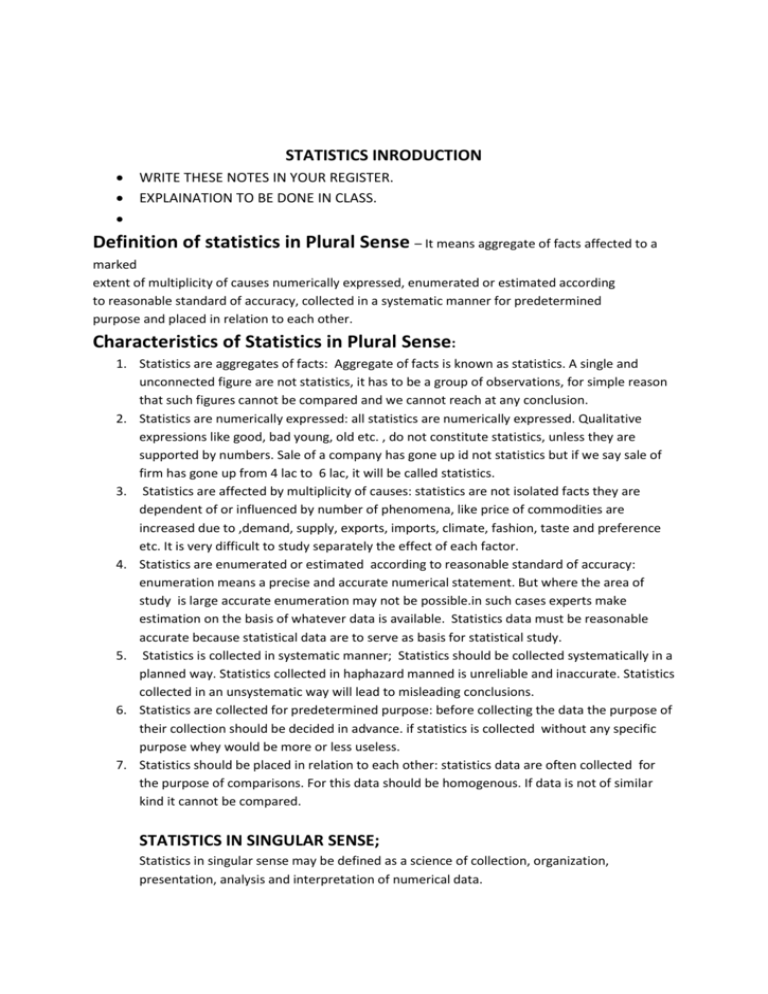
STATISTICS INRODUCTION WRITE THESE NOTES IN YOUR REGISTER. EXPLAINATION TO BE DONE IN CLASS. Definition of statistics in Plural Sense – It means aggregate of facts affected to a marked extent of multiplicity of causes numerically expressed, enumerated or estimated according to reasonable standard of accuracy, collected in a systematic manner for predetermined purpose and placed in relation to each other. Characteristics of Statistics in Plural Sense: 1. Statistics are aggregates of facts: Aggregate of facts is known as statistics. A single and unconnected figure are not statistics, it has to be a group of observations, for simple reason that such figures cannot be compared and we cannot reach at any conclusion. 2. Statistics are numerically expressed: all statistics are numerically expressed. Qualitative expressions like good, bad young, old etc. , do not constitute statistics, unless they are supported by numbers. Sale of a company has gone up id not statistics but if we say sale of firm has gone up from 4 lac to 6 lac, it will be called statistics. 3. Statistics are affected by multiplicity of causes: statistics are not isolated facts they are dependent of or influenced by number of phenomena, like price of commodities are increased due to ,demand, supply, exports, imports, climate, fashion, taste and preference etc. It is very difficult to study separately the effect of each factor. 4. Statistics are enumerated or estimated according to reasonable standard of accuracy: enumeration means a precise and accurate numerical statement. But where the area of study is large accurate enumeration may not be possible.in such cases experts make estimation on the basis of whatever data is available. Statistics data must be reasonable accurate because statistical data are to serve as basis for statistical study. 5. Statistics is collected in systematic manner; Statistics should be collected systematically in a planned way. Statistics collected in haphazard manned is unreliable and inaccurate. Statistics collected in an unsystematic way will lead to misleading conclusions. 6. Statistics are collected for predetermined purpose: before collecting the data the purpose of their collection should be decided in advance. if statistics is collected without any specific purpose whey would be more or less useless. 7. Statistics should be placed in relation to each other: statistics data are often collected for the purpose of comparisons. For this data should be homogenous. If data is not of similar kind it cannot be compared. STATISTICS IN SINGULAR SENSE; Statistics in singular sense may be defined as a science of collection, organization, presentation, analysis and interpretation of numerical data. 1. Collection of data: this is the first step instatistical statement and is foundation of statistical analysis. so data should be collected with maximum careby investigator. 2. Organisation of data: after collection data need to be organised by editing and classifying. This can be done by classification according to characteristics of data. 3. Presentation of data: after organisation data are presented in some suitable manner to make statistical analysis easier. The organised data can presented in form of tables, graphs and diagrams. 4. Analysis of data: the next stage is he analysis of presented data. There are lare numbr of methods used for analysing the data such as averages, dispersion, correlation etc. 5. Interpretation of data: it is last step of statistical study. Interpretation of data implies the drawing of conclusion on the basis of ata analysed in earlier stage. It involves skill experience. It provides the conclusions drawn from the analysed data. On the basis of this conclusion certain decisions can be taken. STATISTICAL TOOLS: STAGE I STATISTICAL STUDY COLLECTION OF DATA II ORGANISATION OF DATA III PRESENTATION OF DATA IV V ANALYSIS OF DATA INTERPRETATION OF DATA TOOLS CENSUS OR SAMPLE METHOD (PRIMARY OF SECONDARY SOURCES OF DATA) ON THE BASIS OF GEOGRAPHICAL AREA ,CHRONOLOGICAL ORDER OR FREQUENCY DISTRIBUTION PIE CHART, GRAPHS, DIGRAMS TABLES ETC. MEAN MODE MEDIAN USING TOOLS IN DISPERSION LIKE DEVIATIONS IMPORTANCE OF STATISTICS: 1. To Government: statistics is regarded as an indispensible tool to run an efficient administration. The govt. must know the statistics of price, national income, per capita income employment, poverty levels exports and imports of a country. These statistics are used to formulate suitable policies for economic and social development. it also help to rate India’s position in world. 2. To business: statistical methods help the businessmen in estimating future changes in sales revenue or demand on the basis of past data. Sampling methods are used to conduct business and market surveys. Before starting new business or to expand the existing one statistical information is highly useful. Statistical methods are also adopted for quality control. Looking at past data businessmen can also predict their profitability and decisions. 3. to researchers for formulating laws: statistics proves to very useful in the hands of researchers. They make great use of statistics and statistical methods. They are constantly engaged in the task of research trying to maintain functional relationship between various variables such as price and demand, income and expenditure, poverty and sickness, crop yields and fertilizers, etc. in fact there is hardly any research work that can be completed without statistics. Law of demand have been developed due to statistical analysis. 4. To know the performance of an economy: statistics is very useful and essential for understanding the performance of any economy. It provides the basis for comparing the performance of an economy over th years. With the help of statistics it is possible to understand the contribution of various sectors in the economy namely primary, secondary and tertiary sectors. Economists depend on statistics to measure gross domestic product, consumption, savings, investment expenditure changes in value of money. Statistics is also helpful in knowing standard of living and taxable capacity of the people. 5. Economic planning: statistics is the most important tool in economic planning means utilization of country’s resources into development activities in accordance with national priorities. For ensuring better utilisation of resources, statistics relating to resources and their distribution among different uses is essential. Statistics also helps in evaluating the progress if such planning. 6. Economic policies: policy makers use statistics to make economic policies. Monetary policy and fiscal policy are made on the basis of statistics available. Govt. expenditure and central bank’s credit control weapons are concepts which are statistical in nature. How much should be taxation , interest rate, increase in salaries, development plans of govt. are decided on the basis of statistics only.
